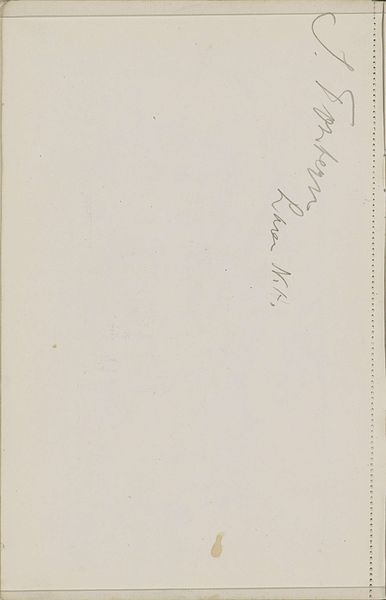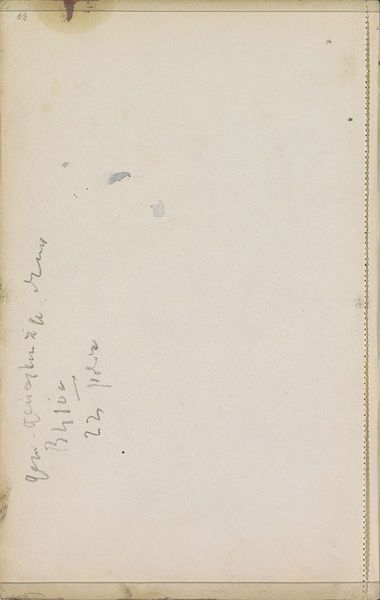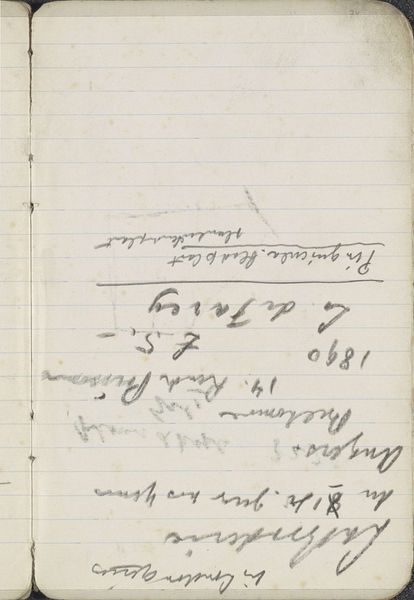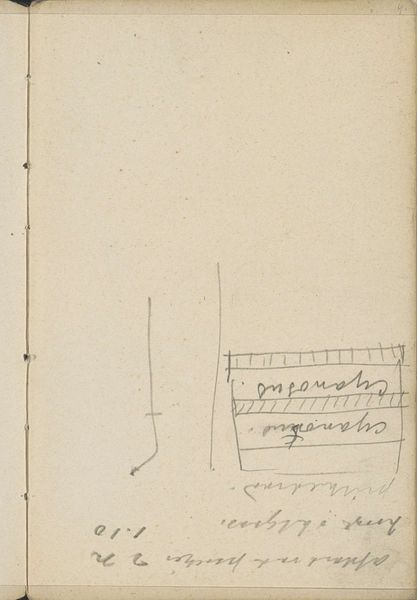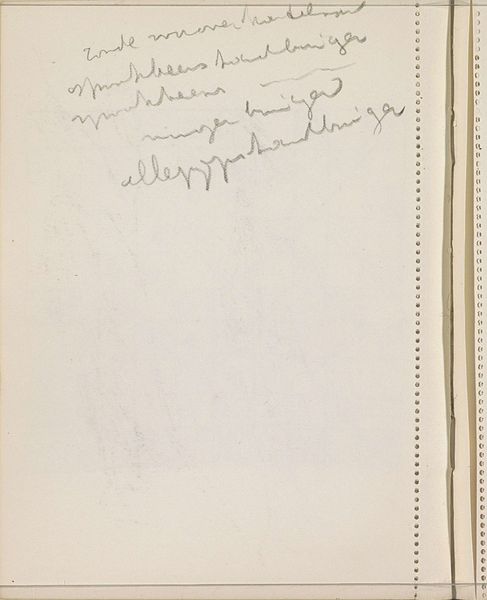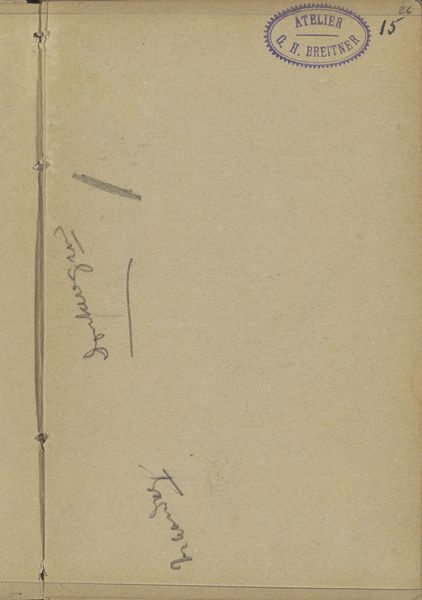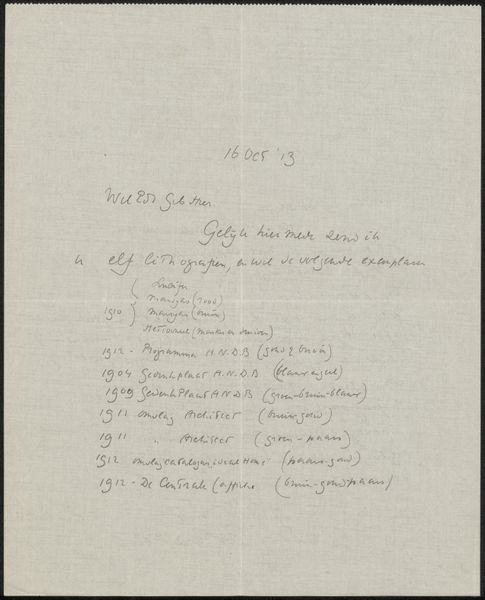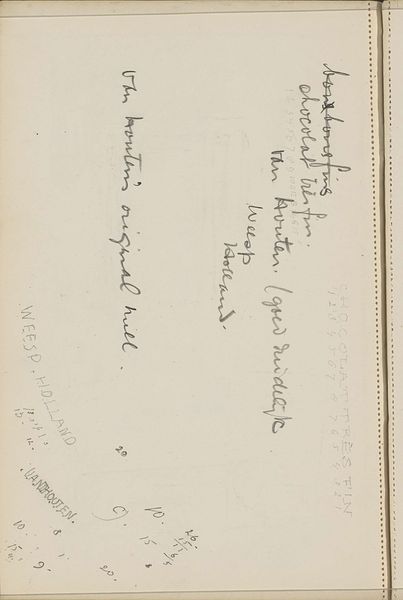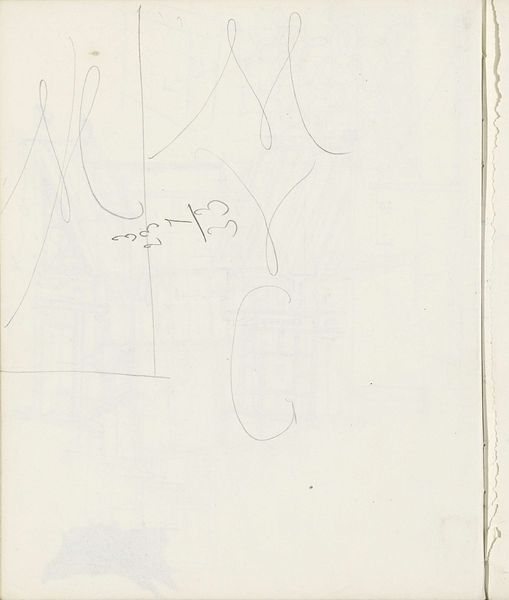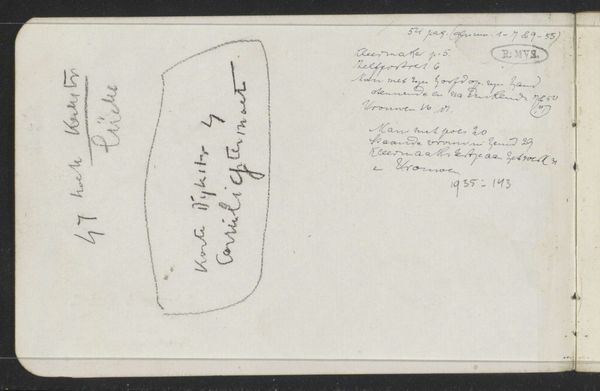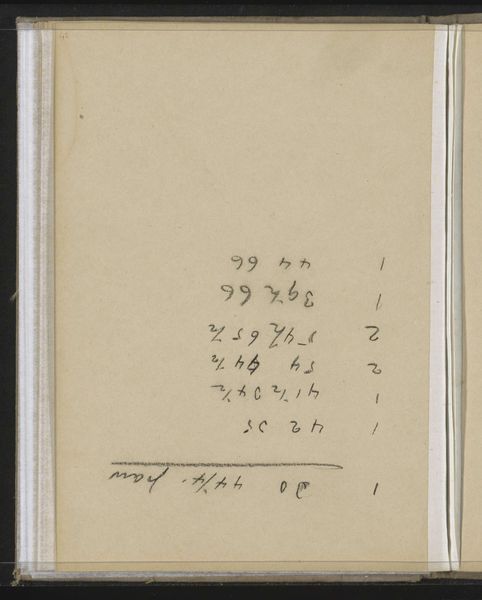
drawing, mixed-media, paper, ink
#
drawing
#
aged paper
#
mixed-media
#
hand written
#
hand-lettering
#
hand drawn type
#
hand lettering
#
paper
#
personal sketchbook
#
ink
#
hand-written
#
fading type
#
sketchbook drawing
#
sketchbook art
Copyright: Rijks Museum: Open Domain
Curator: Here we have “Notities,” created sometime between 1890 and 1946 by Cornelis Vreedenburgh. It's currently held at the Rijksmuseum and it is crafted with mixed media, combining drawing, ink, and paper. What are your first thoughts on encountering it? Editor: It has the intimate feel of a page torn from a personal sketchbook or ledger. The aged paper gives it a tangible history. Curator: Absolutely, the materials speak volumes! Vreedenburgh chose humble means—paper, ink, and drawing techniques—to construct what seems to be lists and jottings. It begs the question of value: Why preserve mundane notes like this? Are we elevating everyday acts of record-keeping? Editor: Perhaps we are. The handwriting, the seemingly random names and numbers...it evokes a sense of human presence and lived experience. I’m curious about the societal context in which these notes were created. What historical or economic realities do these figures hint at? Who were B. Burman, or G.B.O. Wolf and what stories of identity are within their name? Curator: That’s where the real intrigue lies! These figures are like whispers from the past, reminding us that the artistic process is often intertwined with daily labor and economy. Editor: Right. And in a society still grappling with transparency and power dynamics, this little window into what someone felt was valuable to write down becomes important. Perhaps this artifact invites conversations about class, accessibility, and who gets to have their history preserved. It has a beautiful and moving power because of its simplicity. Curator: A valuable perspective. Ultimately, ‘Notities’ provides space for contemplation. It’s amazing to consider how a simple collection of materials – ink on paper - and rudimentary drawing can transform into something so evocative and thought-provoking. Editor: Yes, definitely. It prompts a dialogue across time and mediums, suggesting that even seemingly minor works carry significant cultural meaning. Thank you for your insight!
Comments
No comments
Be the first to comment and join the conversation on the ultimate creative platform.
